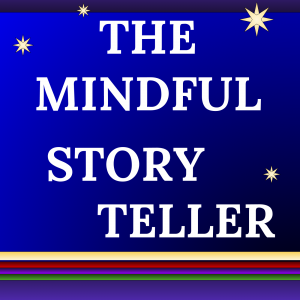
“The painter works with his colors, mixes them, tries out effects, knows before he begins just what his box and palette can provide him with. He leaves nothing to chance…He feels for a divine relationship between what he wishes to say and the colors in which he wishes to say it…It would seem as if for those artists [known as storytellers who are] dependent on words alone for the expression of their art, words made audible, there would be both delight and intelligence in acquiring sufficient material to work with freely.” – Ruth Sawyer, The Way of the Storyteller, p. 140.
∞∞∞∞∞∞∞∞
How often do we talk about vocabulary, the words we use and how we use them? We are perhaps fearful of arrogance. Why use a complex term when a simpler one will suffice? There is also the risk of exclusion. Jargon has often been used to separate the insiders from those on the periphery. Our words separate us by class or level of formal education. We risk the misperception that good grammar is a direct indicator of a “bright person” or a skillful mind. But can an expansive vocabulary also move us toward a subtlety of expression – moving us beyond the thick contentiousness of black-and-white thinking?
In a literature club for 6th graders, we are currently reading a Walter de la Mare book from 1929. The book is written for children, yet the vocabulary is not “dumbed down” for young people. Tread, entreaty, verges, inflamed, canopy, mounting, enraptured, salutation, kindled, wrath, straggling, vanguard, illumined, sombre, abiding, apprehensive, apparition, portend, reconnoitre, mounded, nought, wherewith – these words are found on 1 of the 420 pages in de la Mare’s book. What do you think? Has our working vocabulary declined over the decades?
The richness of the palette, as well as the artists care and use of the colors, is elemental to the painter’s work. It is the stuff of her vocation; the substance shaped through her creativity. For storytellers, our concrete material is words. Our stories are shaped in words. Ours is an oral art, a living art, an ephemeral art that appears and disappears on the breath of the teller. Because of this, it is both the selection of words and the sundry ways we make them manifest that gives creative form to our stories. Our pacing, inflection, tone, and other vocal choices and characteristics shape the telling of tales, but it begins with the words we choose and use.
As I share old folk tales with children (or adults), I often keep much of the rich vocabulary intact in the retelling. Why? Language holds power. And beauty. You need not know the meaning of every word to appreciate the story as a whole. Even if we cannot identify every color the painter has used, we may look upon her art with gratitude – knowing that the painting could not be what it is without the specific array of color carefully chosen by the artist.
∞∞∞∞∞∞∞∞
How do you think of words? Do you see an expansive vocabulary as simply “a way of showing off” or can words help us move towards subtlety and nuance of meaning? And can our selection of words add beauty?
Are you open to expanding your vocabulary? Where do you hear unfamiliar words? What books, articles, and stories do you read that offer rich, flavorful, zesty words? Do any of these words make it into your speech or the stories that you then share?
(Music: Courtesy of Adrian Von Ziegler, “Sacred Earth.” )